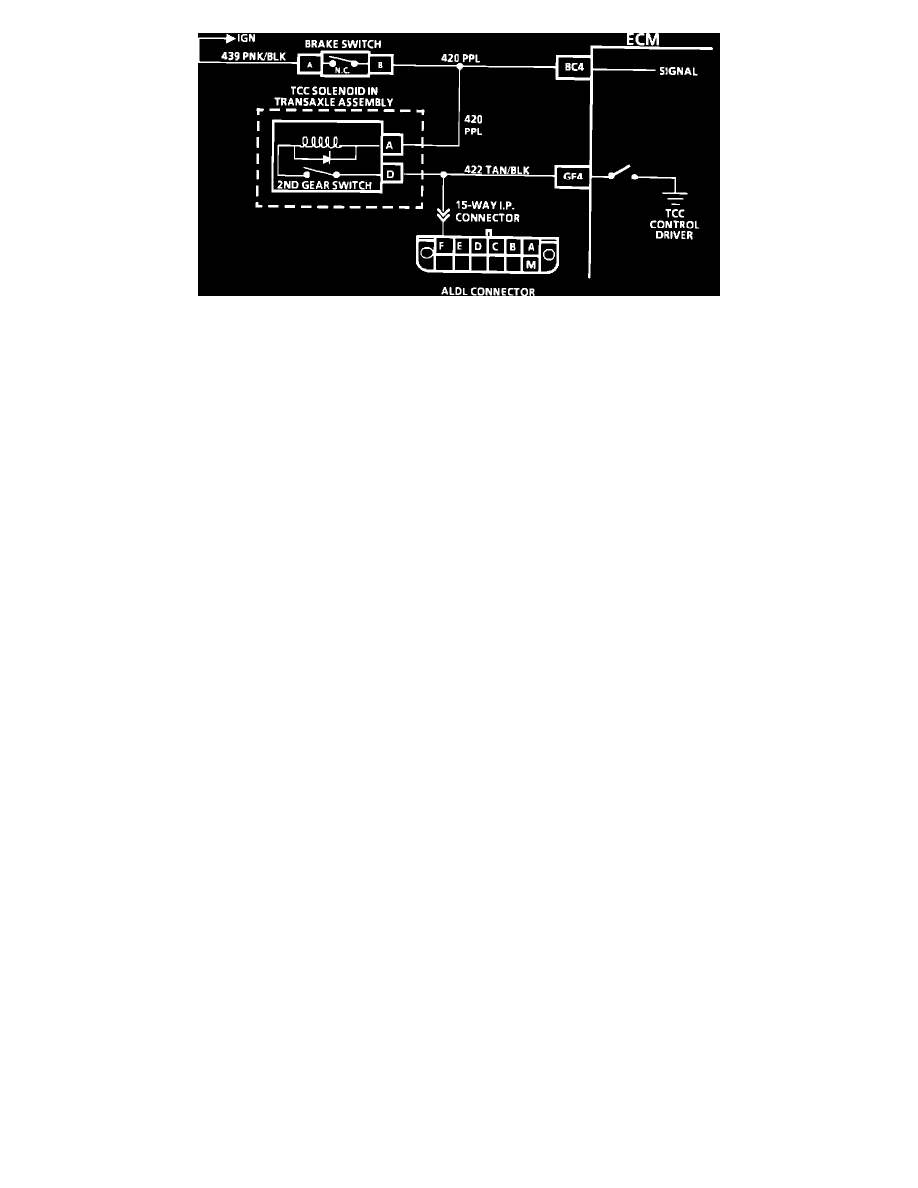Calais L4-138 2.3L VIN D FI (1990)

Chart C-8A Wiring Diagram
CIRCUIT DESCRIPTION:
The purpose of the torque converter clutch feature is to eliminate the power loss of the transmission converter stage when the vehicle is in a cruise
condition. This allows the convenience of the automatic transmission and the fuel economy of a manual transmission.
Fused battery ignition is supplied to the TCC solenoid through the brake switch, and transmission second gear apply switch. The ECM will engage TCC
by grounding CKT 422 to energize the solenoid.
TCC will engage when:
^
Vehicle speed above a calibrated value. (about 34 mph 55 km/h)
^
Throttle position sensor output not changing, indicating a steady road speed.
^
Transmission second gear switch closed
^
Brake switch closed
TEST DESCRIPTION: Numbers below refer to circled numbers on the diagnostic chart.
1.
Light "OFF" confirms transmission second gear apply switch is open.
2.
By 25 mph the transmission second gear apply switch should close. Test light will come on and confirm battery supply and closed brake switch.
3.
Grounding the diagnostic terminal with ignition "ON", engine "OFF," should energize the TCC solenoid by grounding CKT 422. This test checks
the ability of the ECM to supply a ground to the TCC solenoid. The test light connected from 12 volts to ALDL terminal "F" will turn "ON" as
CKT 422 is grounded.
DIAGNOSTIC AIDS:
The "Scan" tool only indicates when the ECM has turned "ON" the TCC driver and this does not confirm that the TCC has engaged. To determine if
TCC is functioning properly, road test the vehicle. Engine rpm should decrease when the "Scan" indicates the TCC driver has turned "ON."
